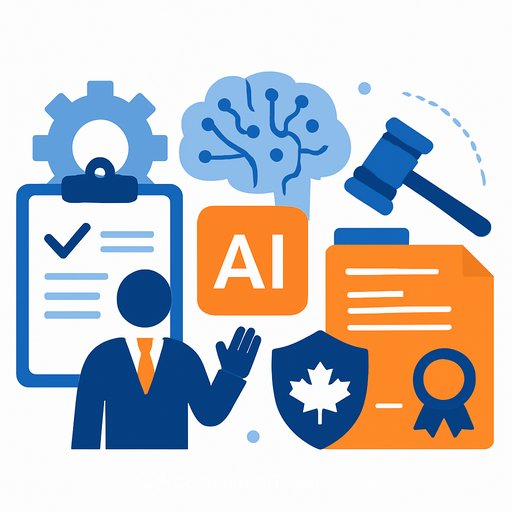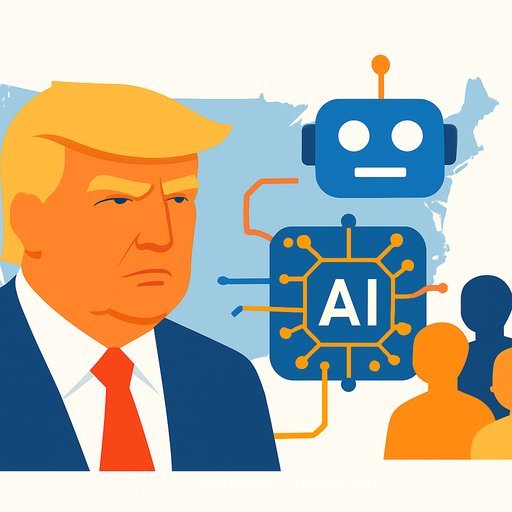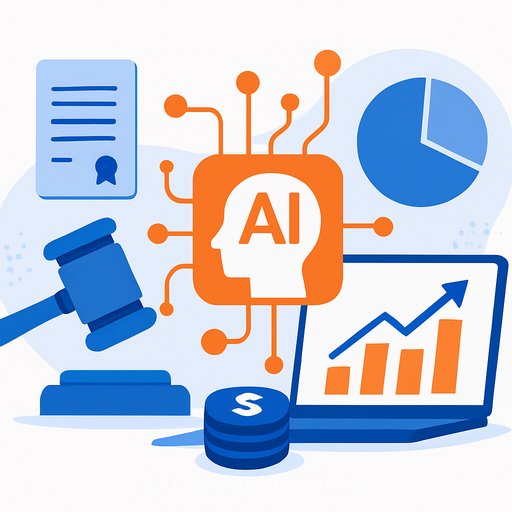California's First Law Mandating AI Chatbot Safety: What Counsel Needs to Know
October 13, 2025 - California has enacted the nation's first statute requiring safety measures for AI chatbots. Governor Gavin Newsom signed the bill, stating, "We've seen some truly horrific and tragic examples of young people harmed by unregulated tech, and we won't stand by while companies continue without necessary limits and accountability."
The law imposes "critical" safeguards on chatbot interactions and creates a pathway for civil suits when failures lead to harm, according to bill sponsor Sen. Steve Padilla. The move comes amid reports that teens interacted with chatbots before taking their own lives, intensifying scrutiny of companion-style AI systems.
Why this matters for legal teams
This statute sets a concrete standard of care for consumer-facing conversational AI. It also opens new avenues for private litigation, expanding exposure beyond traditional product and negligence theories into statutory noncompliance.
Counsel will need to advise on scope, coverage, and preemption, and quickly help product, safety, and compliance teams stand up defensible controls, documentation, and incident response protocols.
Core provisions as described by state officials
- Operators of AI chatbots must implement "critical" safeguards in user interactions, with a clear focus on preventing harmful guidance in self-harm contexts.
- Users and families gain an avenue to bring lawsuits if failures to implement required safeguards lead to harm.
While the full operational detail will come from the statutory text and any implementing guidance, the legislative intent is explicit: reduce risks in sensitive interactions and create accountability when companies ignore safety obligations.
Context: companion chatbots and recent cases
Sen. Padilla highlighted industry incentives to capture and hold teen attention "at the expense of their real world relationships." He referenced teen suicides tied to chatbot interactions, including the death of 14-year-old Sewell Setzer III.
According to a lawsuit filed by Sewell's mother, Megan Garcia, her son became attached to a "Game of Thrones"-inspired bot on Character.AI. Garcia stated, "Today, California has ensured that a companion chatbot will not be able to speak to a child or vulnerable individual about suicide, nor will a chatbot be able to help a person to plan his or her own suicide."
Who is likely covered
Although counsel must confirm definitions in the enacted text, expect coverage to include operators of consumer-facing chatbots available to California users, regardless of where the company is based. Companies offering role-play, "companion," or romantic persona features should assume heightened scrutiny.
Enterprise-only, internal tools may face a different risk profile, but confirm scope. Vendor and marketplace models (hosting third-party bots) raise joint-responsibility and indemnity considerations.
Immediate compliance priorities
- Product safety controls: Implement or validate self-harm detection policies, refusal behaviors, and safe responses. Ensure clear escalation to appropriate resources and disable risky interaction modes for minors and vulnerable users.
- Age assurance and access controls: Assess age gating, parental controls, and restrictions on romantic or intimate role-play features for underage users.
- Safety evaluations: Document red-teaming, adversarial testing, and release gates for high-risk prompts. Maintain logs sufficient to reconstruct incidents.
- Policy and UX: Update safety policies, warnings, and user messaging. Remove any content that could be construed as facilitating self-harm.
- Governance: Assign accountable owners, define decision rights, and record risk acceptance. Brief the board and set regular reporting on safety metrics.
- Vendor and platform risk: Update contracts to require safety controls, audit rights, and indemnity where third-party models or personas are hosted.
- Litigation readiness: Preserve incident data, finalize legal hold triggers, and coordinate counsel review of safety logs and testing artifacts.
Liability and litigation exposure
- Private right of action: The statute signals a route for civil suits tied to failures to deploy required safeguards. Expect negligence per se claims where plaintiffs allege statutory noncompliance.
- Product theories: Plaintiffs may pursue design defect, failure to warn, and negligent design claims alongside statutory claims.
- Section 230 and speech issues: Operators will argue immunity for user and third-party content; plaintiffs will argue design and product decisions fall outside 230. Expect early motions and mixed results, context-specific.
- Causation: Defense strategy will scrutinize timelines, user history, and intervening factors. Plaintiffs will lean on logs, model behavior, and foreseeability tied to teen usage.
- Insurance: Review cyber, tech E&O, and media policies for AI safety exclusions, bodily injury carve-outs, and claims-made notice requirements.
Federal-state tension and preemption questions
The White House has pushed to avoid a patchwork, while national rules are not yet in place. Anticipate challenges arguing preemption or burdens on interstate commerce for multi-state chatbot services.
First Amendment defenses may arise, but courts often distinguish between speech and product design choices where safety is at issue. Track early cases to see how courts balance state police powers against speech and platform defenses.
Operational checklist for the next 90 days
- Scope your exposure: Inventory all chatbots accessible to California users. Confirm whether any serve minors or vulnerable populations.
- Close safety gaps: Validate refusal behavior, crisis-safe responses, and escalation workflows. Ship high-priority fixes and log the changes.
- Update public artifacts: Terms, safety policies, in-product notices, and parental controls. Ensure marketing materials do not overpromise safety features.
- Train teams: Product, trust & safety, support, and incident response. Align on triggers for escalation and legal holds.
- Governance and audit: Set quarterly safety reviews, independent testing, and board reporting. Retain evidence of compliance efforts.
Open questions to monitor
- Definitions and exemptions: How "chatbot," "operator," "child," and "vulnerable individual" are defined will drive scope.
- Safe harbors: Whether recognized frameworks or specific controls create presumptions of compliance.
- Effective date and enforcement: Timelines, penalties, and the role of regulators versus private suits.
- Interplay with privacy/youth safety laws: Alignment with existing state and federal obligations and age-assurance expectations.
For teams seeking structure for safety programs, the NIST AI Risk Management Framework is a practical baseline for controls and documentation. See the framework overview at NIST.
If your legal department is building AI governance skills, explore curated training by role at Complete AI Training.
Key quotes
- Gov. Gavin Newsom: "We've seen some truly horrific and tragic examples of young people harmed by unregulated tech, and we won't stand by while companies continue without necessary limits and accountability."
- Sen. Steve Padilla: The law "requires" operators to implement "critical" safeguards and provides an avenue for lawsuits when failures lead to harm.
- Megan Garcia: "Today, California has ensured that a companion chatbot will not be able to speak to a child or vulnerable individual about suicide, nor will a chatbot be able to help a person to plan his or her own suicide."
The signal is clear: safety obligations for conversational AI have moved from policy talk to enforceable law. Counsel should move quickly to align products, documentation, and governance to the new standard of care in California.
Your membership also unlocks:






